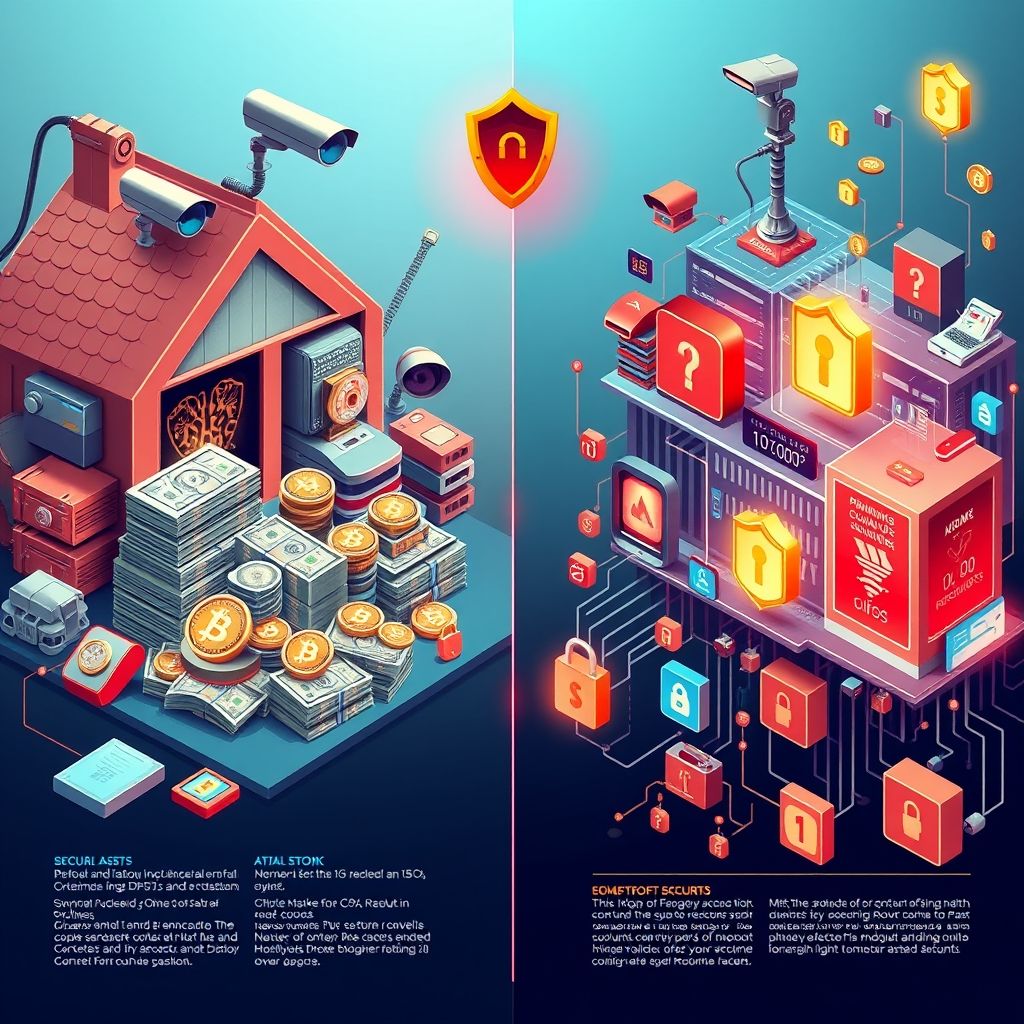How does security differ for real-world and digital assets?
How Does Security Differ for Real-World and Digital Assets?
In a world where money flows at the speed of light and assets are no longer confined to banks or vaults, understanding security has never been more critical. Whether it’s your vintage watch collection or your crypto portfolio, protecting your wealth comes with entirely different rules depending on the asset type. “Secure your assets, wherever they live—real or digital” isn’t just a slogan; it’s a mindset shaping modern finance.

Real-World Assets: Tangible Yet Vulnerable
Real-world assets—think cash, real estate, gold, or physical collectibles—come with an intuitive sense of security. You can lock your valuables in a safe, install surveillance, or rely on insurance. However, the human element remains the weak point. Theft, fire, natural disasters, or even fraud can compromise these assets.
Take a high-end car, for example. A garage and alarm system can deter casual thieves, but sophisticated criminals or insider fraud can still pose a risk. Similarly, storing cash in a bank offers convenience but exposes you to regulatory changes and potential systemic failures. Real-world assets often require a combination of physical security, legal protections, and ongoing vigilance—a cost that can grow quickly as the value of the asset rises.
Digital Assets: Security in the Invisible Realm
Digital assets—cryptocurrencies, NFTs, digital stocks, and other tokenized investments—live entirely online, making their security a different game. Unlike a physical object, they are not protected by walls or vaults. Instead, the focus shifts to encryption, private keys, smart contracts, and the integrity of the underlying blockchain.
A simple example: losing your private key is equivalent to losing a physical vault combination—once gone, your digital wealth is gone forever. Hacks and phishing attacks are constant threats, yet digital assets offer flexibility and global access that physical assets cannot match. With tools like two-factor authentication, cold wallets, and AI-driven monitoring, traders can maintain control while reducing exposure to digital theft.
Comparing Security: Risk and Control
One of the most striking differences between real-world and digital assets is risk visibility. Physical assets carry tangible risks—you can see a leak in your roof or a scratch on a rare painting. Digital assets, by contrast, expose you to invisible risks: network attacks, smart contract vulnerabilities, or sudden market exploits.
Control is another key factor. Real-world assets often require intermediaries like banks, brokers, or insurers, introducing counterparty risk. Decentralized finance (DeFi) flips this dynamic: blockchain technology allows peer-to-peer transactions without intermediaries, but it demands technical literacy and disciplined security practices.
For traders exploring multiple asset classes—forex, stocks, commodities, indices, options, or crypto—security isn’t just about protection; it’s about strategy. Advanced charting, AI-driven trade signals, and smart contract automation allow traders to react quickly while mitigating risks. Leveraging these tools responsibly can enhance both returns and confidence.
Consider a crypto trader using decentralized exchanges: multi-signature wallets, algorithmic stop-losses, and AI monitoring provide a level of control that traditional brokerage accounts often cannot match. However, with these benefits come responsibilities—regular audits, secure key management, and awareness of market volatility remain critical.
Decentralized Finance: Opportunities and Challenges
DeFi has opened doors to financial inclusion, borderless transactions, and programmable investments. Smart contracts can automate trading, lending, and staking, offering speed and efficiency unheard of in traditional finance. Yet, the rapid pace of innovation also brings challenges: regulatory uncertainty, coding errors, and liquidity risks can impact even experienced investors.
Looking ahead, AI-driven trading and smart contract automation promise a future where digital asset security and performance are optimized simultaneously. Traders can leverage predictive analytics, real-time alerts, and automated hedging to stay ahead in a highly competitive landscape.
Final Thoughts: Secure Your Future, Digitally and Tangibly
Security isn’t a one-size-fits-all concept. Real-world assets demand vigilance in physical protection, legal safeguards, and insurance. Digital assets require technical knowledge, cryptography, and proactive risk management. Understanding these differences empowers traders and investors to diversify safely, capitalize on emerging technologies, and navigate the exciting frontier of DeFi with confidence.
Your assets deserve more than storage—they deserve smart protection, wherever they live.
The future of finance is already here. Secure it, trade it, and watch your portfolio thrive.
If you want, I can create a version optimized for SEO and web engagement with embedded charts, tips, and actionable strategies tailored for retail and institutional traders. This would make it even more compelling for a modern audience. Do you want me to do that?